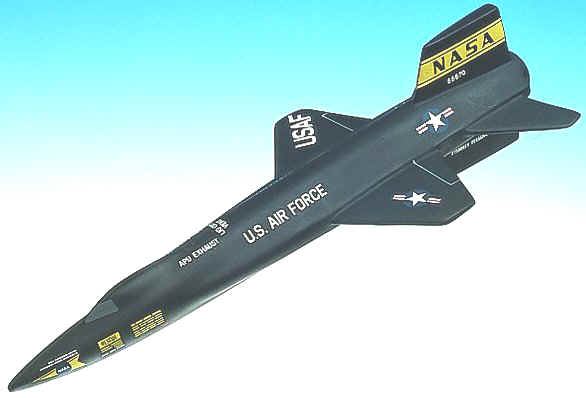|
|
| North
American X-15A |
 |
While
the Bell X-1 was the first to break the
sound barrier, the X-15 has the distinction of being the most
successful research airplane ever flown. It made the first
manned probes into the lower edges of space. It was
designed for speeds of up to 4,000 mph and altitudes of 50
miles, but these goals were exceeded on numerous occasions.
Several X-15 pilots earned an "astronaut" rating by
attaining altitudes above 50 miles and the X-15 flight program
contributed significantly to the Mercury, Gemini and Apollo
projects.
Scott Crossfield participated in the
first glided flight from 38,000 ft. on June 8, 1959 and the
first powered flight on September 17, 1959. Other significant
milestones include mach 3.2 by Joseph A. Walker on May 12, 1960
and the first man to take the X-15 past mach 4, 5, and 6 was
Major Robert M. White. Neil Armstrong, the first man to walk on
the moon, was also an X-15 test pilot. The final unofficial
speed and altitude records for the X-15 were 4,520 mph (mach
6.7) and 354,200 feet (67.08 miles). Three X-15s were built. One was
destroyed in a crash. The other two are at the National Air and
Space Museum and the U.S. Air Force Museum.
|
|

|
North American
X-15
From our Standard Series. 1/48th scale. 5.5"
wingspan x 13" long.
No. ABX4D-ST. Only $99.95 |
|
